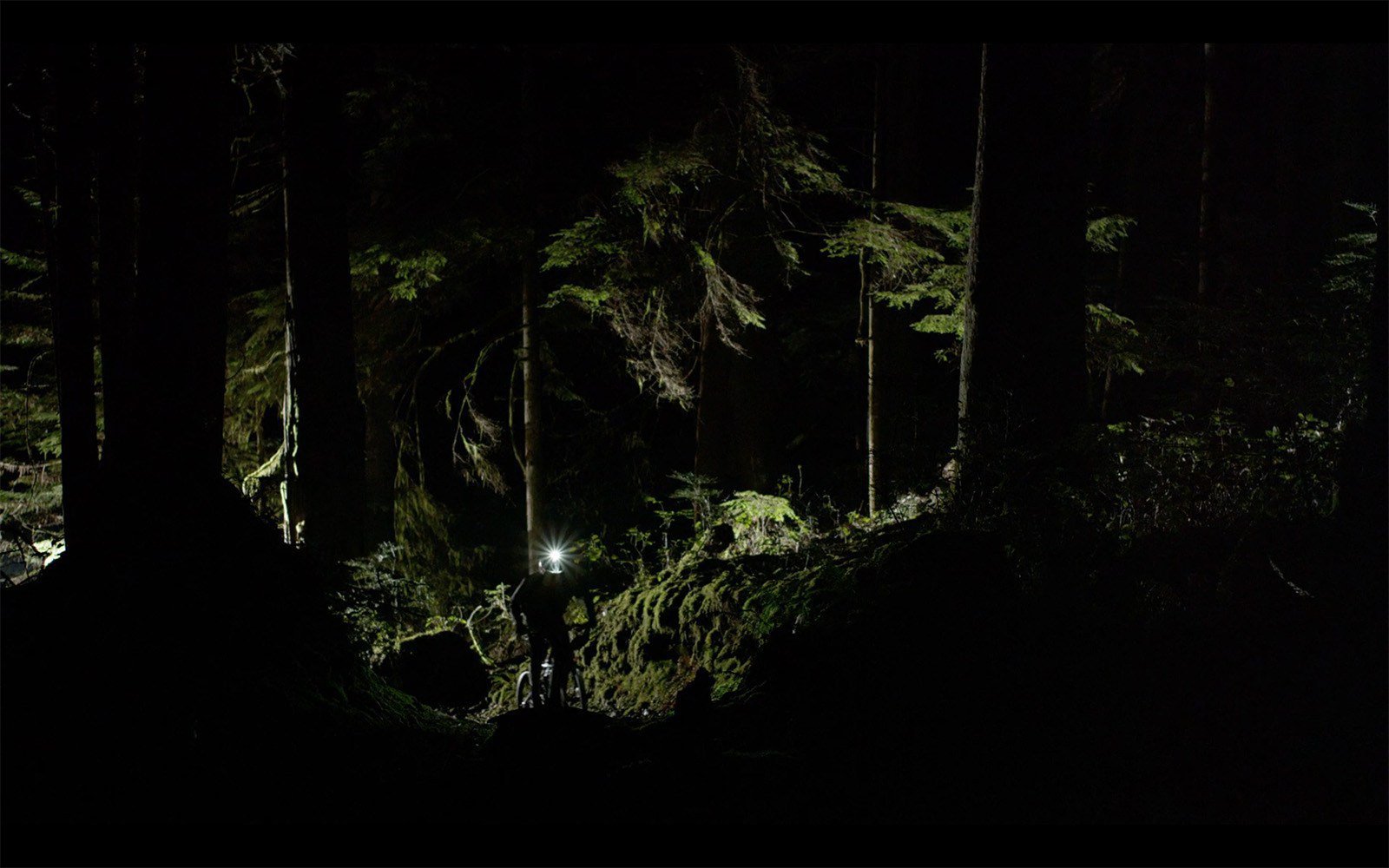
2-MINUTE EXPERT
What Makes a Quality Bike Light
2-Minute Expert is a new feature on NSMB that distills technology and other concepts into short, easily digestible chunks.
Shorter days and worsening weather means that night riding is back on the menu for a lot of us. Working out at the gym may not be an option this year depending on where you live. So there should be an uptick in the number of people dragging out their old lights, or getting into night riding for the first time. And the first question, always, is "can I get away with running cheap lights, or should I invest in better ones from reputable brands?" At NSMB we've had a lot of experience with both, and we can all attest that investing once in the right lights is the way to go, for reasons ranging from not getting stranded in the dark when your cheap lights crap out, a legitimate fear that cheap battery chargers can start fires, and the knowledge that the lumen counts and battery times on the box can be counted on when you're an hour into a solo night ride.
You're going to need one light for your helmet and one for your bars. This will give you two angles from which to aim the beams, helping disperse shadows from different angles, and also give you a good combination of spot lighting (on your helmet and directed by where you're looking) and flood (generally handled by your bar light). The really good news in all of this is that lights have come down in price quite a bit in the last five years. It wasn't long ago that you were looking at $400 or more to get a decent 2-light setup, whereas now you can toss plenty of light down the trail for about $250 US (you'll need to spend more for long rides or really bright lights for high-speed or super technical riding). Unlike most other gear decisions, night lights are unique in that they unlock more ride time if you have them: the freedom to ride after dark, or stretch out rides that would otherwise be shortened. It also means the freedom to pick your ride time for when the weather improves - sometimes it rains all day and clears up just as the sun goes down (thanks, Murphy!) but with lights, you have the freedom to go later when it's not so terrible out.
We leaned on our friends at Blackburn Design to give us some insight into how lights are designed, as well as what to look for when deciding what lights are right for you.
FL1 Certification
FL1 certification is a big deal for Blackburn. Not every brand uses it, but it would be better for all of us if they did, because it allows a true apples-to-apples comparison of the two most important attributes of a light: how bright it is (measured in lumens), and for how long.
For example, a brand promoting a non-FL1 certified light might say that it runs at 500 lumens for 20 hours. In actual fact, if measured using the FL1 standard, it might output only 500 lumens for a short while, and then run at the brightness of a lit candle for the rest of the time making it essentially unusable. FL1 stops measuring lights when the battery is down at 10%, because that's when a Li-Ion battery stops being capable of running at full power.
The upside of all of this is that you can trust the battery time and power claims of a company that uses FL1 certification for its lights.
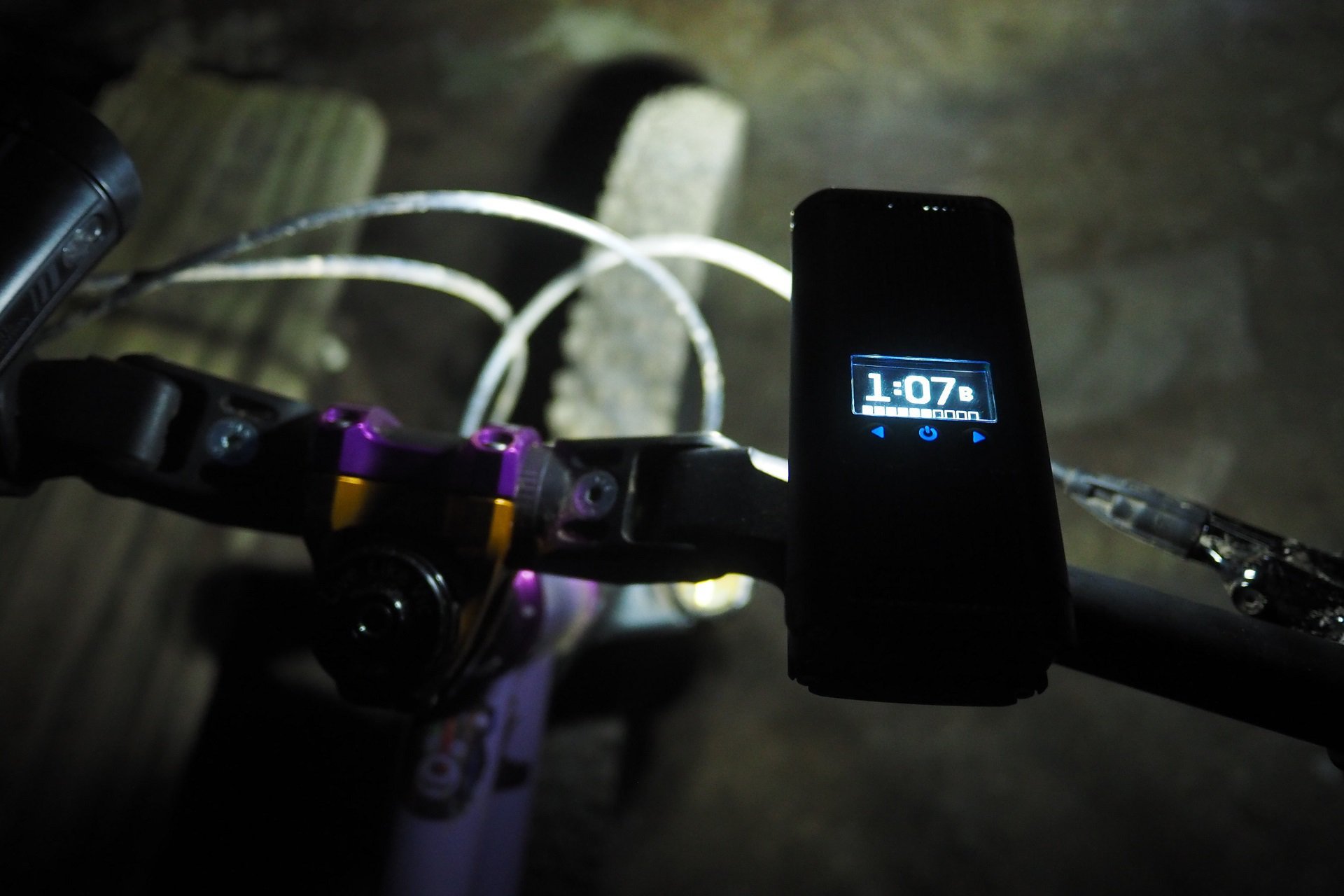
Most lights don't have a handy screen telling you how much time you have remaining at a given brightness - like the Blackburn Countdown 1600 shown here - so a light's FL1 Certification gives you lumen counts and run times you can rely on. Photo: Andrew Major
Ingress Protection (IP) Rating
You've no doubt become more familiar with IP ratings over the last few years as they've become popular in use with mobile phones and other home electronics. IP - or Ingress Protection - ratings determine how protected a device is from things like water and dust. Water is the most important one, of course, as you don't want it to get into your light and cause a short-circuit. A unit's IP rating is a good measure of its durability and longevity, because it is a good indicator of build quality.
In a nutshell, here's how It works:
First Digit: Solids Protection // 6 = No ingress of dust; complete protection against contact.
Second Digit: Liquids Protection // 7 = Immersion up to 1m. Ingress of water in harmful quantity shall not be possible when the enclosure is immersed in water under defined conditions of pressure and time (up to 1 m of submersion).
Therefore an IP 67 rating (like on Blackburn's Dayblazer 1100 and Countdown 1600 lights) means a unit is dust-proof, as well as submersible in up to 1 meter of water for up to 30 minutes. In other words, plenty of protection on even the wettest, dirtiest, most abusive above ground use you can imagine, 365 days a year. For the hard life of a night life in an environment like the North Shore, IP 67 is what we'd be after. Thankfully there is a good selection of lights out there with that rating.
Reflector Design
Reflector design is continually evolving and, combined with battery technology, is what is most responsible for the rapid improvements in bike light performance and value over the last 5 years or so. Where performance is at a premium, such as night riding on trails in a technical environment, or at speed, you're going to want more than one LED to handle the task. Otherwise, the designer is forced to choose a middle ground between spot lighting (which handles details as well as seeing further down the trail at speed) and flood lighting (which gives a wide field of view but less power and acuity in any given area).
Blackburn's Dayblazer 1100 uses a design that stacks 2 LEDs vertically. The top LED is the primary worker, using the most power to cast a beam far down the trail. It uses an 18º beam angle which is a happy medium between tight and wide, giving you fairly broad coverage while at speed. This means that the second LED can be tuned to work like your car's fog lights: it emits a lower-powered beam that is very wide and very close to your front tire, letting you see what's about to be underneath you without overpowering the work of your main beam.
The Blackburn Countdown 1600 has a different way of using its two LEDs. Those two TIR (Total Internal Reflection) lenses sit side by side and run with equal output, which let its designers pack the brightest light into a small package without using spotlights. Rather than the fog light application of the Dayblazer 1100, the Countdown 1600 focuses some of its considerable beam power (from two lights), close to the wheel, while the rest of the beam focuses further down the trail. In this case, choosing a happy medium and multiplying that by two does the job very well.
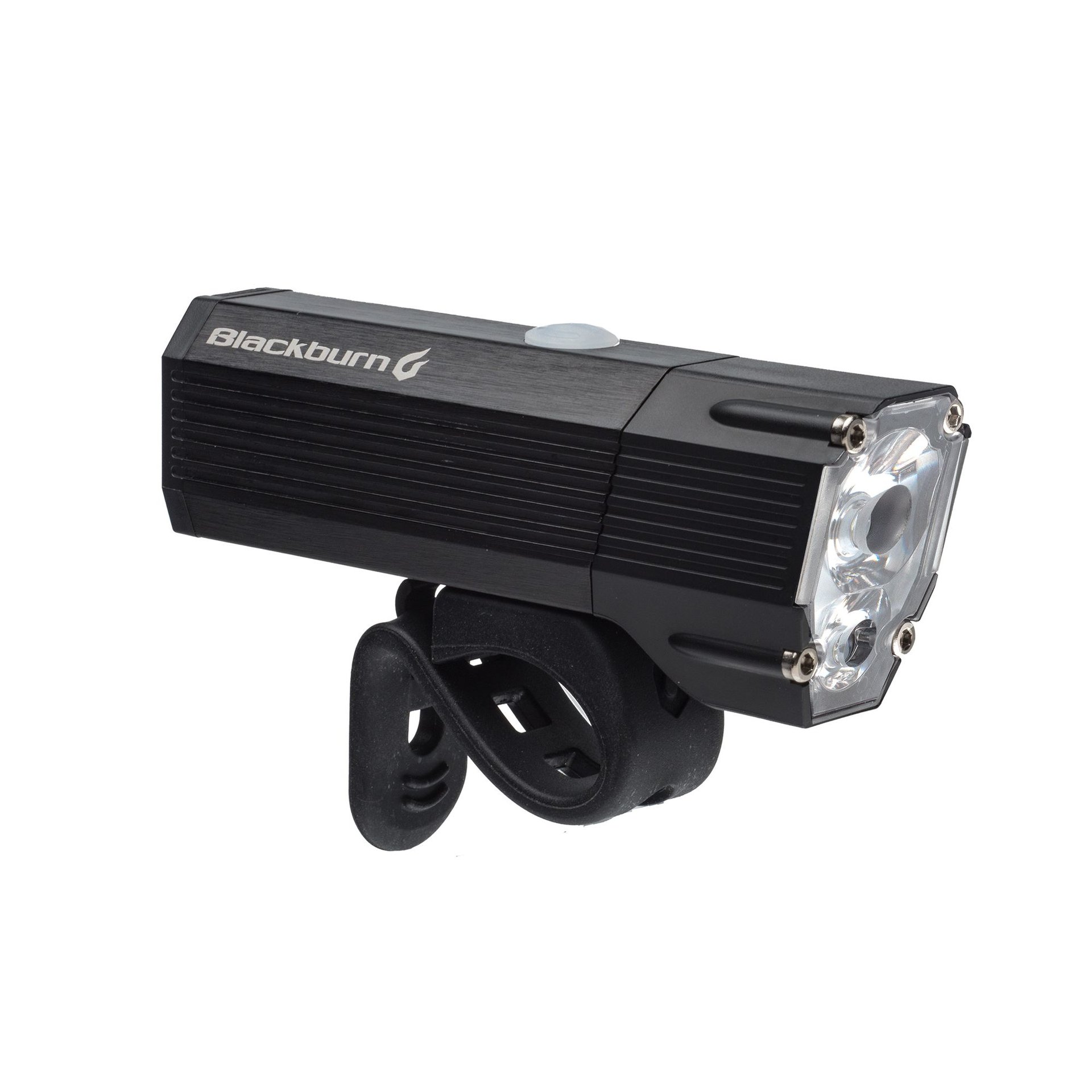
Blackburn's Dayblazer 1100 can work on your bar for commuting or mellow night riding needs, but is light and self-contained, making it ideal for use on your helmet. 1100 lumens is plenty of punch for that application.
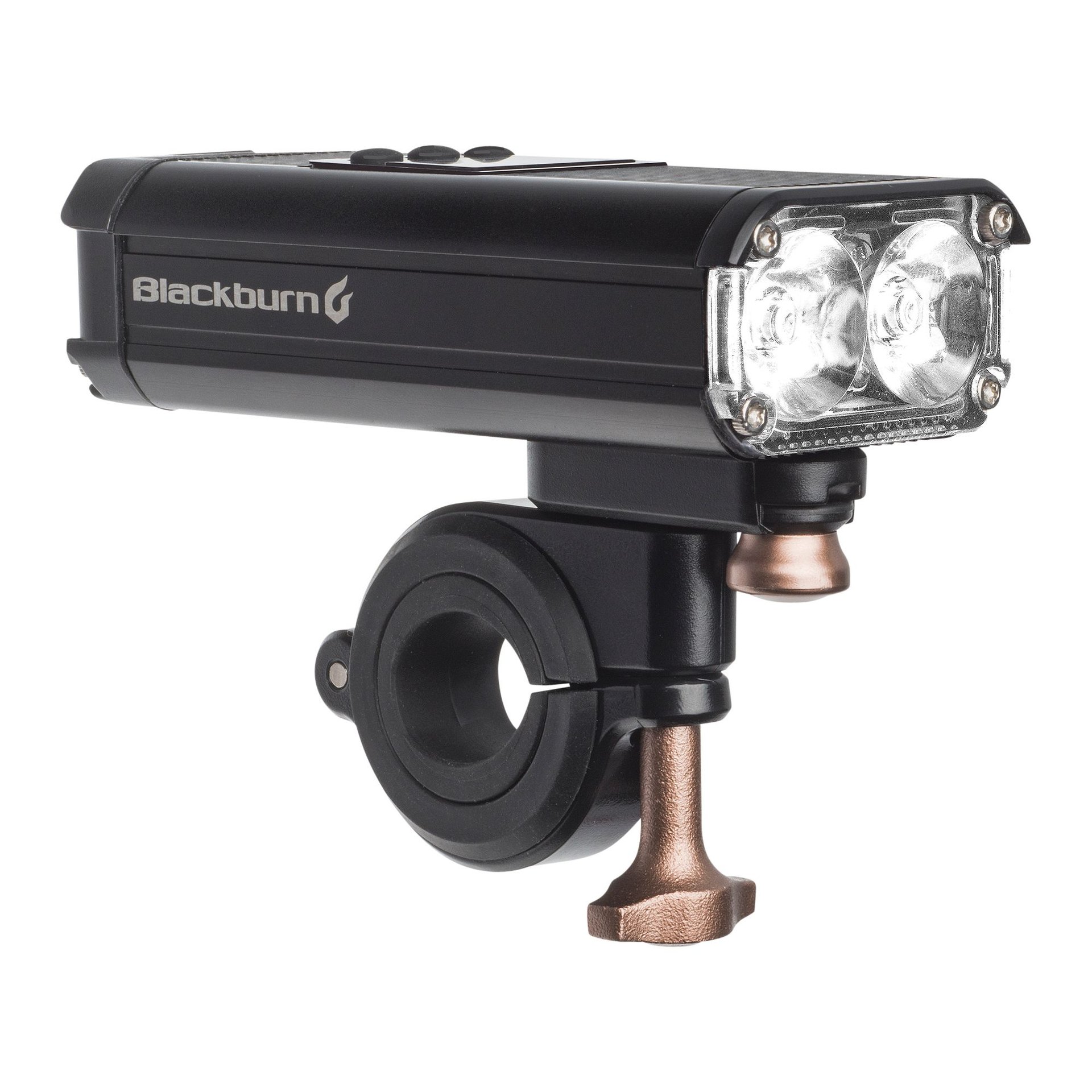
Where the Dayblazer uses two reflectors in a stacked position, the Countdown 1600 shown here uses two identical reflectors side by side. The Countdown's weight (due to its 1600 lumen output and high battery capacity) make it a good choice for use on your bar.
More Resources
More info here about FL1 standards.
Wikipedia's page about IP ratings will tell you all you need to know.
Check out the rest of Blackburn Designs' products on Competitive Cyclist.

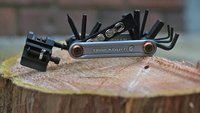
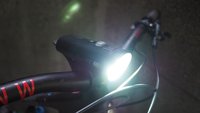









Comments
mudrunner
3 years, 6 months ago
As someone who works in the lighting industry, IP67 is nice, but it is not essential for a bike light. IP65 is more appropriate for riding on the North Shore or anywhere else in the world
IP65 gives "protection against low-pressure jets of directed water from any angle". Components are tested using a something that resembles a multi-head shower nozzle. Rain and tire splashes would be really, really low pressure jets. In fact, your lights will probably see tougher conditions on the drive over to the ride if it's on the roof of your car.
IP66 gives "protection against direct high pressure jets" ...so that you can clean your bike with a pressure washer and your lights will still work. Your bike's bearings may have an issue, though.
Since Balckburn is IP67, of course that's what they'll tout as a standard since it will weed away some legit competition....but IP67 is only testing for temporary immersion...NOT water jet or water spray. So it is not the most appropriate for riding in rainy conditions. Unless you plan on falling off the Ladies Only teeter totter and leaving your bike in the swamp for over 30 minutes.
FYI...almost every municipality street light standard, and most car headlights are IP65.
Reply
Timer
3 years, 6 months ago
Interesting information, thank you.
Aren't car headlights exposed to high pressure spray when driving at speed in the rain? I never had a headlight fail due to water entry, so i don't doubt their engineering, but from the description IP65 seems a little dicy for the use case.
Reply
Cr4w
3 years, 6 months ago
It's really amazing to see how far lights have come. From the water bottle battery incandescent quality BLTs of the 90s. And now to have the bulb and battery technology that two small self-contained units is plenty. Amazing.
Reply
Pete Roggeman
3 years, 6 months ago
I had a set of the first gen Niterider. It was my first ever pro deal (through a shop) which was still spendy, but I wouldn't have come close to affording them at retail. Anyway, probably $250 or so back in '99. Super durable and waterproof, too, but not that bright, and not for very long. Used the hell out of it, though, and it served me well on tons of night rides on the shore. Just had to move slow, and rides were short. We didn't have fancy 'lumens' back then, but I seem to recall it was a 15 or 25-watt halogen light.
Reply
Andy Eunson
3 years, 6 months ago
Geez. We rode in the early 80’s with sidewall generators. Then someone had a great idea and small motorcycle batteries were used. Still the lights were not bright at all. I’ll bet 25 lumens if that.
Reply
Lev
3 years, 6 months ago
Someone asked me how bright their new lights should be. I told them not to go too bright as it takes the fun and mystery out of the night ride.
We all had the bulb and water bottle lights back then and my memory is that it made the rides mores fun and sketchy!
Reply
Pete Roggeman
3 years, 6 months ago
I hear you although trails and bikes are so much better now. We ride faster...lights need to be better.
Reply
Sean Chee
3 years, 6 months ago
I often ride after dark in summer due to the heat in my part of the world. I have a great flashlight that I bar mount. It runs on a 18650 battery and I always carry a spare.
I will probably move it to my helmet when my new ridiculously powerful and heavier torch arrives around xmas. Annoyingly it runs on a different type of li ion battery (21700) but it can take a 18650 in an adaptor so I can still just bring one spare.
Reply
Pete Roggeman
3 years, 6 months ago
What light is it and how do you mount it to the bars? Does it stay in place in rough terrain?
Reply
Sean Chee
3 years, 6 months ago
It's a nitecore p20. It gets worked hard every night and hasn't skipped a beat.
https://flashlight.nitecore.com/product/p20v2
I mount it to the bar in a custom fabricated mount. It took a few tries to get the mount right but in the end even my 3d printed version holds it tight through rough stuff and drops. I subsequently had the mount cnc machined out of 6061 when I had some optical instruments machined.
Reply
AJ Barlas
3 years, 6 months ago
Interesting. What made you opt for that rather than something with mounts for bike setup?
Reply
PKMzeta
3 years, 6 months ago
I'm in the same boat as Sean. Flashlight mounted on the bars with Olight's handlebar mount. Flashlights are cheaper, with trailside-replaceable, non-proprietary batteries, and offer excellent performance.
For better or worse, there's also a large prepper/EDC community dedicated to reviewing flashlights with objective brightness and runtime measurements. There are subsequently many companies competing in the space. In contrast, not nearly as much competition in the MTB-specific lighting market, and of course everything bike-related is subject to the normal markups...
Reply
DanL
3 years, 6 months ago
I always found this a consistent source (albeit localized) for ratings and evaluations of lights :
http://www.torchythebatteryboy.com/p/bike-light-database.html
The reviews and testing for all types of batteries is also well done
Pete Roggeman
3 years, 6 months ago
Fair points. One question I have is how well a light like that runs at full power (ie. 1100 lumens) for an extended period of time? My understanding of some of those bright lights in small packages is that you can't run them at full power for more than 5-10 minutes. Am I wrong?
Sean Chee
3 years, 6 months ago
Pete any good flashlight has multiple brightness modes as well as strobe, sos, defensive strobe.
I rarely use full power on my torches unless I'm out in the field searching for animals or spotlighting pests. Even then I get a lot of use out of a full charge (in excess of 60 mins on my newest lights) and a spare battery is a quick and light swap.
The short use max modes that last ten minutes are only really on my old lights that I don't use too much these days.
Sorry the torch (nitecore e4k) I have on preorder does have a turbo mode but I bought it more for its size than anything else.
Check out the MH10 v2. Mine is coming any time now and is perfect for riding. 3+ hrs at 1200 lumens is tasty for ~$120aud.
Sean Chee
3 years, 6 months ago
Sorry AJ, I have had spotty internet over the weekend. I use this setup simply because I already have it. Riding with it is an ancillary benefit.
A high quality flashlight is an essential tool for me. I use it every day from the vehicle workshop to searching for livestock to hunting bunnies.
I also have an astronomy observatory on the farm so we use minimal exterior lighting to impact the science.
We keep high quality reliable torches in every vehicle and within easy reach in every building. We have about ten and am always getting one or two new ones a year.
I primarily use nitecore but also have fenix and olight torches and lanterns. The value proposition is pretty good too. The links DanL gave further down are good to check out to help choosing. My next light is a Nitecore mh10 v2 due any week now.
The mount I use is custom but I've also used cheap off the shelf generic mounts that you can get on ebay ot Ali express with good results.
My mount uses a taper compression mechanism that is inspired by shaft couplings used in industry and is less bulky than the generic mounts. Attaching to the handlebar is a simple band like brakes or shifters. It works well.
Reply
fartymarty
3 years, 6 months ago
I use something similar to https://www.biketart.com/accessories-c5/pro-camera-mount-topcap-1-1-8-blue-p34576/s100867?utm_medium=ppc&utm_term=pro-camera-mount-topcap-1-1-8-blue-colour-blue-size-1-1-8-inches-colour-blue-size-1-1-8-inches-prsac0072&utm_campaign=froogle&cid=GBP&glCurrency=GBP&glCountry=GB&glCurrency=GBP&glCountry=GB&gclid=CjwKCAjw_NX7BRA1EiwA2dpg0lkzgfxcFOxEHeQN6IJbv5t8RDyoJb2oDf1P8ATcIqDN755bpngsZRoCy-cQAvD_BwE for my bar lights.
Reply
NotMeAtAll
3 years, 6 months ago
I run a BLF Q8 with 4 18650, 12000mAh total, it has a maximum output of 5000 lumens. It's mounted on the handlebar with a camera adaptor and a strap to firmly secure to the handlebar. It lights things like a Magicshine Monteer, but with high color renderization. It's heavy and a beast! Now I'm moving to a lumintop FW4a with "only" 3600 lumens on turbo, but can sustain at least 1500. It uses just one 18650, but I carry a spare battery like Sean Chee comented above.
I do have problem with mountain bike especific lights because they generaly have their own design, the battery can't be changed on the run, and are more expensive than a good light with a good mount.
We just need a good mix between flood and trhow in a flashlight to use it at night, it needs to be robust, the battery need a good run time and be changed on the trail.
To anyone interested, there is a flahslightholic club in reddit, r/flahslight.
Reply
RowanT
3 years, 6 months ago
Can you post a picture of your handlebar mount arrangement for the BLF Q8?
Reply
NotMeAtAll
3 years, 6 months ago
Sure. Its very very simple, but effective. It's a gopro handlebar adapter with a gopro to camera adapter. Some angles, the body sits on the handlebar, a velcro strap to secure the battery holder to the handlebar and I'm set.
Reply
RowanT
3 years, 6 months ago
Thanks for posting. Did you thread in the tripod mount yourself? As far as I can tell, the BLF Q8 options on the market at the moment (in Australia) don't have tripod mounts.
Reply
NotMeAtAll
3 years, 6 months ago
oh, no, I don't have the expertise (yet) to make a threaded hole like this! This one I've got from aliexpress, it already has the threads!
Here is a link to the one I bought: https://pt.aliexpress.com/item/4000117290428.html?spm=a2g0o.productlist.0.0.73024045yMKigS&algo_pvid=c011295a-04ab-423e-afbb-96ec066a3c92&algo_expid=c011295a-04ab-423e-afbb-96ec066a3c92-0&btsid=0bb0623616018968745831973ed0a8&ws_ab_test=searchweb0_0,searchweb201602_,searchweb201603_
Reply
PKMzeta
3 years, 6 months ago
This article reads like an infomercial. I always thought NSMB did better than other MTB publications to avoid native advertising so this is kinda disappointing.
Reply
Brian Tuulos
3 years, 6 months ago
Meh... let em pay the bills.
Reply
Pete Roggeman
3 years, 6 months ago
Appreciate the feedback. It's very, very difficult to sustain an online magazine without the use of affiliate marketing, unless we use a paywall.
I think you're being a bit unfair in calling that an infomercial, though. Did you learn something? That's the main goal of 2-Minute Expert.
I can promise that you'll never see us endorse a product we don't believe in. If we lose the readers' trust, we won't have anything to fall back on.
Reply
John Forsythe
3 years, 6 months ago
I learned about the FL1 certification. Cool stuff.
That being said, I'm still not shelling out $250 for lights. I'm still running my Amazon cheapie set that I paid about $50 for combined. One bar light, and one helmet light. Do they have verified lumens? No. Are they bright enough to safely light the trail? Yes. Are they water proof? Mostly. Lost one of 3 (2 bike set up). Do they last for hours? Actually, they do.
I've been on numerous group rides with folks that have paid a lot for lights and frankly, I can't tell the difference between a $200 bar light and my $25 bar light. The technology is pretty developed these days and while the name brand lights might give you a couple more options or a display, in the end, they both throw light. Is the name brand better? Maybe. Is it 4 or 5 times better? No.
Reply
Pnwpedal
3 years, 6 months ago
Thanks for the article Pete, and I'm being 100% honest here, I just ordered a few new Blackburn lights with this article in mind. I haven't done night rides in ages and my old old Light & Motion HID needed a new battery... But for almost the same price, a new Countdown 1600 was a no-brainer. And that's after shopping around and checking out all the current offerings on the market.
Reply
tref_h
3 years, 6 months ago
Kinda see where people are ragging on the Blackburn only focus but compared to some magazines/pages it’s pretty mild. As they say, gotta keep the lights on (sorry)
The IP misinformation assumption that bigger numbers are better without checking what the numbers actually mean is more troubling though.
Worth mentioning that the Reddit dude further up is partially talking out of his ass about it being impossible to repair MTB specific lights. If my Exposure lights develop a problem the first remedy is always the extremely responsive manufacturer (although it probably helps to be in the same country). If an old age recell is needed though, there are safe and experienced repair shops here in the U.K. that can repair (possibly even upgrade depending on what has happened in battery land since launch) without damaging the looks, function or sealing of my lights. I assume you have competent repair shops in Canada and the States too... 🙂
Reply
rolly
3 years, 6 months ago
Totally misread the headline. I thought this article was about why quality bikes were lighter than bikes of lesser quality. wow...
Reply
AndrewR
3 years, 6 months ago
@rolly yes me too amazing where one's brain puts the word emphasis in a statement.
Reply
Kris Rayner
3 years, 6 months ago
Not knowing if I was going to stick with night riding, I bought a couple lights off Amazon for less than $100. Found out I enjoyed it but when one of my lights died mid-descent on single track, found out I wanted quality lights instead. If your going to night ride, a good light is less than the cost of an ER room visit.
Reply
Please log in to leave a comment.